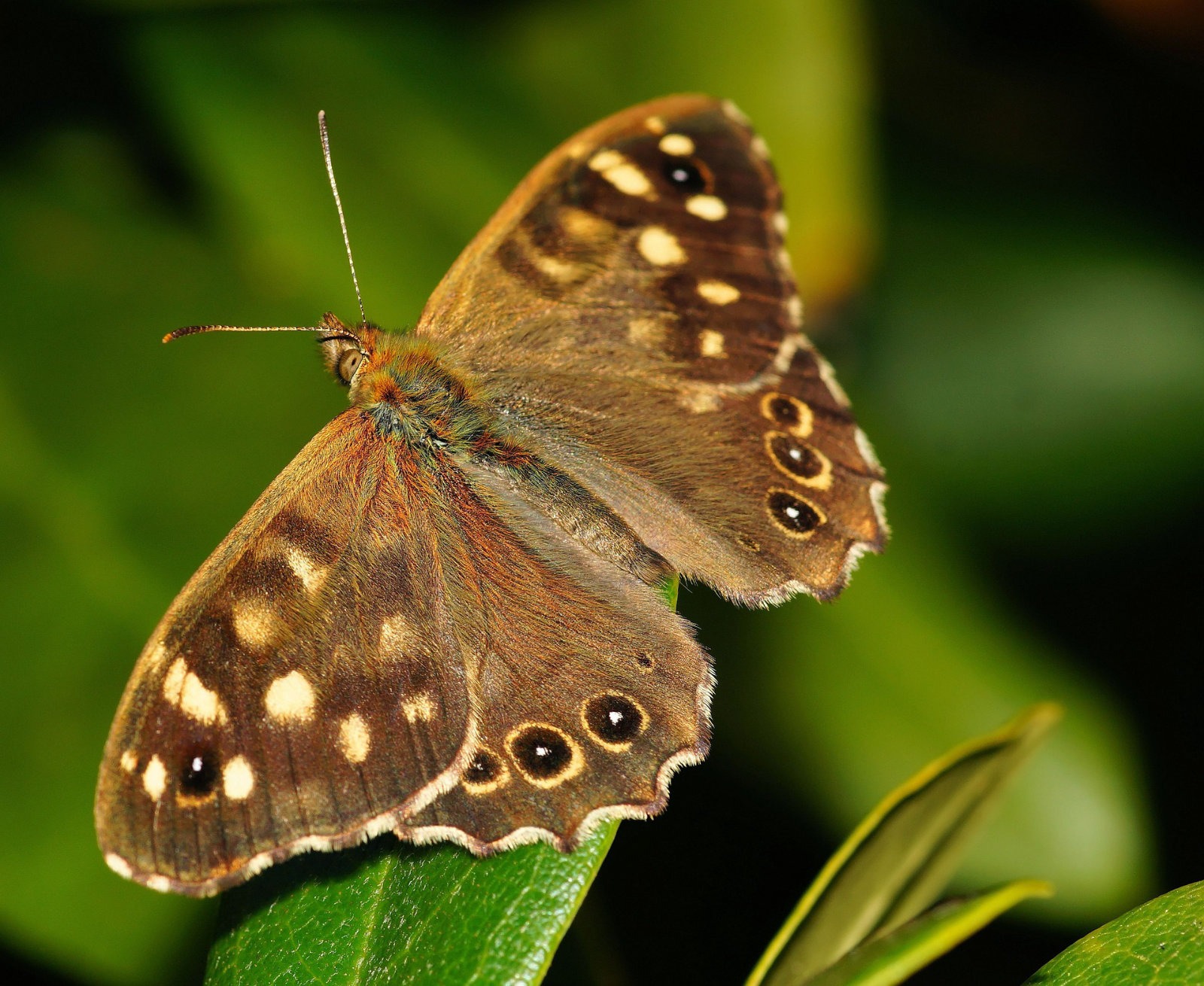Speckled Woods are dark brown with white or orange spots. Northern Speckled Woods tend to have white spots and, as you travel south, the population’s spots become more orange.
Larvae: Leaf green with short hairs down its back.
Latin name: Pararge aegeria
Size: As with many butterfly species, the females are bigger than the males with a wingspan of up to 56mm. The petite males aren’t far behind though, usually topping out at 52mm.

Overview
Often seen feeding on honeydew in treetops rather than sticking its delicate proboscis into sweet flowers, this butterfly is most common in woods but can be seen in gardens and hedgerows provided that there are damp, grassy areas and a little shade for them to take refuge in. Most butterfly species will survive winter in hibernation or as pupae but the Speckled wood is unique as it can live out winter either as a pupa or a larva. Thanks to this particular ability, adults may be seen between March and October with up to three broods in the year. Males are territorial, sitting pompously in prominent, sunny spots, fighting off competitors or chasing after females. The last few years have been kind to this species and the UK population is widespread and strong.
In the garden
Adult butterflies prefer honeydew rich trees but can be attracted with flowers such as Ragwort. The larvae are grass connoisseurs, feeding on species such as False Brome and Yorkshire-fog. As long as there are enough trees to provide honeydew and dappled shade for mating adults, you should be able to attract this species in good numbers.